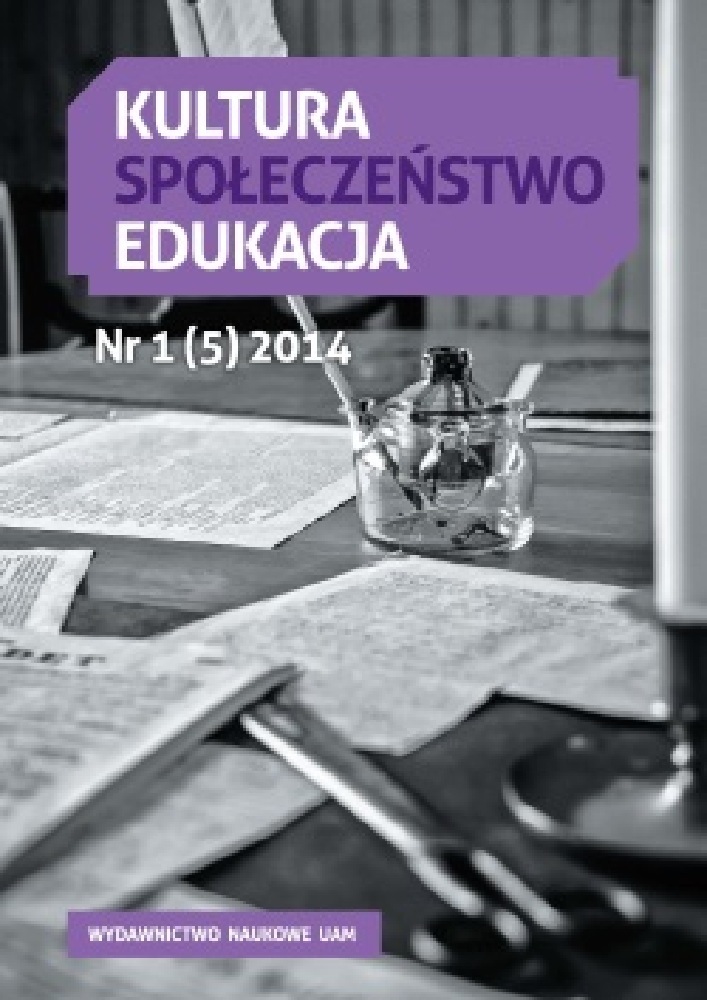Abstrakt
Juvenescence constitutes period between infantile sexuality and sexuality of young man. Adolescence is time of discovering sexual identity, initiating new sexual behaviors and involving into intimate relationships. During this period, the forms of sexual activity are developing from less to more and more mature – from masturbation, through petting to sexual initiation. Decision of a first sexual intercourse is an important act for every person. Nevertheless, sexual initiation which is precocious, in a stage of unformed identity, can disturb psychosexual functioning of an individual causing unplanned pregnancies, leading to sexually transmissible diseases and initiating risky sexual behaviors. The causes of starting precocious sexual activity are associated with improper models of upbringing (strictness or lack of interference) as well as with distancing of youth from pedagogical or educational influences of school or church. These traditional socializing agendas are replaced with media influences and behavior patterns providing by peers. It seems that only complex acts from pedagogical and socializing backgrounds can contribute starting responsible behaviors of youth in sexual field.Bibliografia
Beisert M. 1991. Seks twojego dziecka. Poznań.
Beisert M. 2001. Dorastanie seksualne – pomost ku dorosłości. W Psychologia rozwiązywania problemów szkoły, 158-182. Poznań.
Beisert M. 2004. Eksperymenty seksualne okresu dzieciństwa. W Seksualność w cyklu życia człowieka. Poznań.
Camoletto R.F. 2011. „Sexual Beginners: Accounting for First Sexual Intercourse in Italian Young People’s Heterosexual Biographies”. Sexual Education 11 (3): 315-325.
Collins R.L, M.N. Elliott, S.H. Berry, D.E. Kanouse, D. Kunkel, S.B. Hunter, A. Miu. 2004. “Watching Sex on Television Predicts Adolescent Initiation of Sexual Behavior”. Pediatrics 114 (3): 280-289.
Davis S., Mares M.-L. 1998. “Effects of Talk Show Viewing on Adolescents”. Journal of Communication 48 (3): 69-86.
Erikson E.H. 2004. Tożsamość a cykl życia. Poznań.
Gulczyńska A. 2009. Rodzinne uwarunkowania aktywności seksualnej młodych dorosłych. Poznań.
Izdebski Z. 2000. Wiedza, przekonania o HIV/AIDS w społeczeństwie polskim. Zachowania seksualne. Warszawa.
Izdebski Z. 2006. Ryzykowana dekada. Seksualność Polaków w dobie HIV/AIDS. Studium porównawcze 1997 – 2001 – 2005. Zielona Góra.
Kaestle C. E. (et al.). 2005. „Young Age at First Sexual Intercourse and Sexually Transmitted Infections in Adolescents and Young Adults”. American Journal of Epidemiology 161 (8): 774-780.
Kernberg O. F. 1998. Związki miłosne. Norma i patologia, przeł. E. Lipska. Poznań.
Lew-Starowicz Z. 2002. Raport seksualności Polaków. Warszawa.
Lew-Starowicz Z., K. Szczerba. 1995. Nowoczesne wychowanie seksualne: podręcznik dla młodzieży szkolnej. Warszawa.
Magnusson B.M., S.W. Masho, K.L. Lapane. 2012. „Early Age at First Intercourse and Subsequent Gaps in Contraceptive Use”. Journal of Women’s Health 21 (1): 73-80.
Manlove J., E. Terry, L. Gitelson, AR. Papillo, S. Russell. 2000. „Explaining Demographic Trends in Teenage Fertility, 1980–1995”. Family Planning Perspectives 32 (4):166-175.
Manning W.D., M.A. Longmore, P.C. Giordano. 2000. “The Relationship Context of Contraceptive Use at First Intercourse”. Family Planning Perspectives 32 (4):104-110.
Money J., A. Erhardt. 1972. Man, Woman, Boy, Girl. Baltimore.
Newman B.M., P.R. Newman. 1987. Development Through Life: a Psychosocial Approach. California.
Obuchowska I., A. Jaczewski. 2002. Rozwój erotyczny. Warszawa.
Pardun C.J., K.L. L’Engle, J.D. Brown. 2005. „Linking Exposure to Outcomes: Early Adolescents’ Consumption of Sexual Content in Six Media”. Mass Communication and Society 8 (2): 75-91.
Steinberg L., K.C. Monahan. 2010. „Adolescents’ Exposure to Sexy Media Does Not Hasten the Initiation of Sexual Intercourse”. Developmental Psychology 47 (2): 562-576.
Valle A.-K., E. Roysamb, J. Sundby, K.I. Klepp. 2009. “Parental Social Position, Body Image, and Other Psychosocial Determinants and First Sexual Intercourse Among 15- and 16-year Olds”. Adolescence 44 (174): 479-498.
Waszyńska K. 2010. Biograficzne uwarunkowania życia seksualnego. Poznań.
Weber M., O. Quiring, G. Daschmann. 2012. „Peers, Parents and Pornography: Exploring Adolescents’ Exposure to Sexually Explicit Material and Its Developmental Correlates”. Sexuality and Culture 16: 408-427.
Woo J. S.T., L.A. Brotto. 2008. „ Age of First Sexual Intercourse and Acculturation: Effects on Adult Sexual Responding”. Journal of Sexual Medicine 5:571-582.
Wojnarowska B, J. Mazur. 1999. Zdrowie młodzieży szkolnej w Polsce. Zachowania zdrowotne i samoocena zdrowia. Raport z serii badań wykonanych w 1998 roku. Warszawa.
Zdrojewicz Z., K. Belowska-Bień, M. Boruta, M. Cielecka, S. Słomkowska-Muller. 2005a. Badanie seksualności studentek wrocławskich uczelni. W: Miłość, hormony i seks. Wrocław.
Zdrojewicz Z., K. Belowska-Bień, J. Nocoń, E. Rokosz. 2005b. Badanie seksualności studentów wrocławskich uczelni. W: Miłość, hormony i seks. Wrocław.
Licencja
Prawa autorskie (c) 2017 Barbara Jankowiak, Anna Gulczyńska

Utwór dostępny jest na licencji Creative Commons Uznanie autorstwa – Bez utworów zależnych 4.0 Międzynarodowe.
